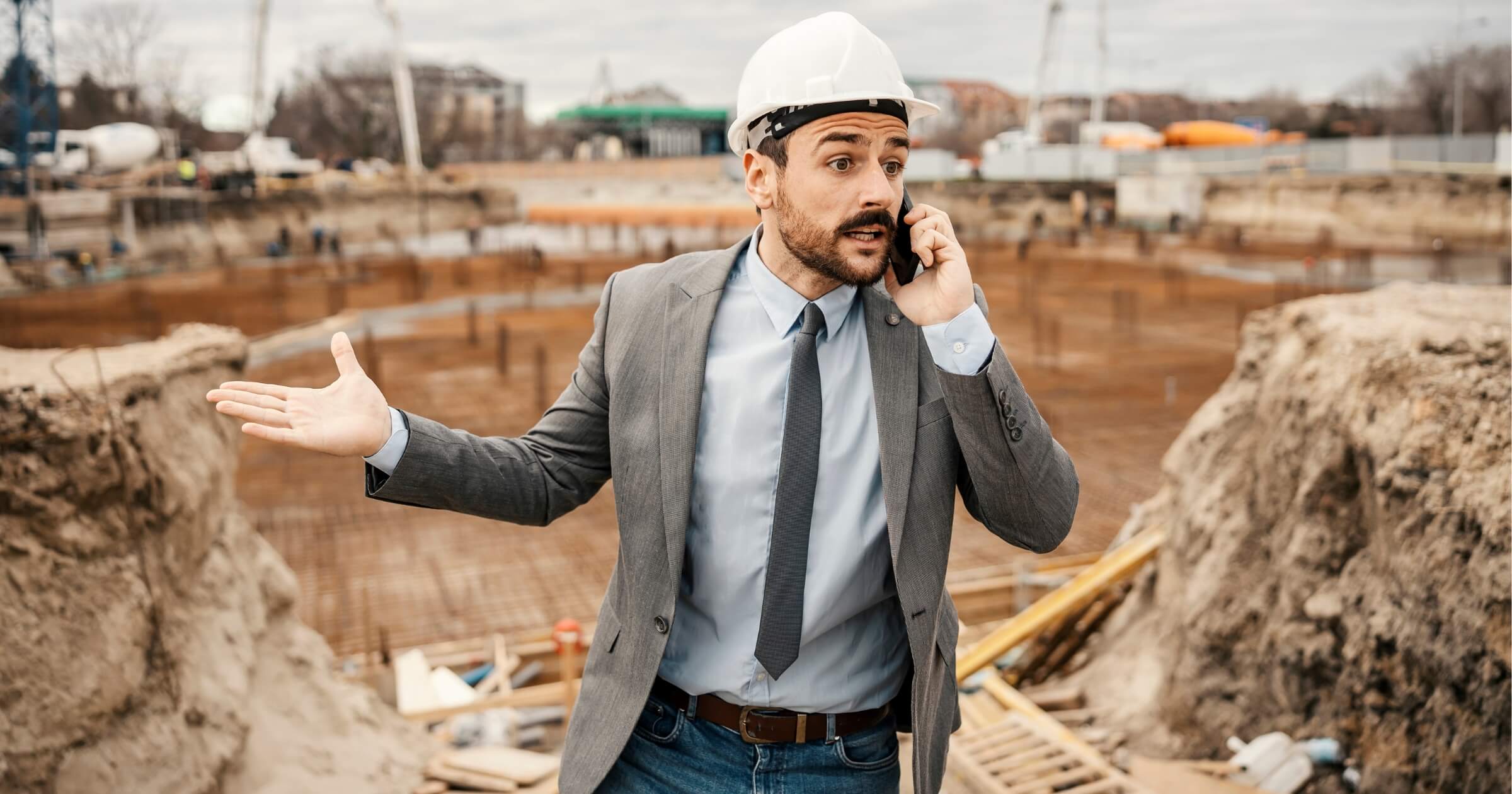Construction projects often fall behind schedule, resulting in cost overruns and strained relationships with clients. AI tools now offer practical solutions to reducing construction delays, providing predictive scheduling, smarter procurement, live site monitoring, and faster administrative workflows. This article examines how AI tools are enabling teams to avoid costly construction delays. We’ll highlight proven use cases, spotlight emerging companies, and discuss what’s needed to make this shift successful.
Quick look
- Common causes of delay include labor gaps, poor task coordination, adverse weather conditions, permit logjams, equipment failures, and material shortages.
- AI tools for predictive scheduling surface threats early by analyzing past projects and ongoing field data.
- Computer vision, combined with cameras and sensors, helps identify site slowdowns and schedule drift.
- AI for procurement and logistics ensures that parts arrive just in time, reducing stockouts and idle crews.
- Automating permit checks and paperwork prevents administrative bottlenecks from stalling progress.
Leading causes of construction delays
Labor shortages or trade crew mismatches
When you don’t have the right crews available at the right time, work grinds to a halt. If framers are delayed, you push back drywall, finishers, and even inspections. In high-growth regions or tight labor markets, it’s common for subcontractors to be double-booked. Poor communication between general contractors and labor scheduling teams exacerbates the problem.
Inefficient scheduling and lack of real-time coordination
Using outdated or manual schedules is a recipe for holdups. Crews may arrive only to find that prerequisites are unfinished or materials aren’t ready. That mismatch results in idle time, unnecessary rework, and increased labor expenses. It also makes it more challenging to keep projects on budget when subcontractors bill for lost hours.
Weather events disrupting outdoor work
Construction projects, such as foundations, roofing, or site grading, are vulnerable to weather conditions. Even a few days of rain can cascade into weeks of delay. High winds can halt crane operations, while cold snaps may force temporary shutdowns. In certain climates, weather can dominate your project timeline.
Permit delays, inspections backlog, or plan revisions
Municipal offices often fall behind, resulting in delayed permit issuance or site inspections. A plumbing hiccup can stall framing closures and drywall work. If plans need revisions for code compliance or owner changes, resubmissions can take weeks. These administrative pauses are common in urban areas and can derail schedules unexpectedly.
Equipment breakdowns or rescheduling due to maintenance
Heavy machinery requires regular upkeep, and when a crane or concrete pump fails, jobs come to a halt immediately. Even short downtime can derail a delivery or force crews to wait. To meet tight deadlines, equipment fleets are often swapped between projects, creating conflicts. Poor equipment coordination only compounds the risk of delays.
Material shortages, supply chain mismatch, or transportation delays
Nothing derails a schedule like missing materials. A single delayed HVAC unit or long-lead item can shut down entire workstreams. Modern global supply chains are subject to unpredictable shifts, and shipments can be delayed at ports, in customs, or due to adverse weather conditions. Without visibility into vendor performance, project planning becomes a gamble.
How AI helps reduce delays
AI tools quickly sift through high volumes of data, such as past job logs, current site conditions, and supply chain feeds, to predict where delays may occur. They fortify workflows in scheduling, procurement, progress tracking, and documentation management. With early warnings and clearer visibility, AI tools enable managers to make specific adjustments, such as shifting indoor tasks, fast-tracking inspections, or rerouting deliveries.
Predictive scheduling and forecasting
AI tools learn from historical data, such as crew productivity, weather patterns, and subcontractor performance, and then they compare it to current project activity. If deliveries tend to arrive late or specific trades lag consistently after rain, the system assigns higher risk scores to upcoming tasks. Managers receive alerts well in advance of the schedule derailing, enabling them to make proactive adjustments. According to CMiC, using predictive scheduling helps teams identify schedule pressure early, allowing them to act before delays impact their budget or timing.
Progress tracking with computer vision
Systems like Buildots mount 360-degree cameras to monitor job site progress. Images are checked against BIM-based schedules to spot missing frames or delays in concrete pours. If reality falls behind the plan, the platform sends alerts so managers can address hold-ups immediately. One pilot demonstrated a 50% reduction in delays and a significantly lower administrative burden, thanks to the use of automated progress capture.
Resource and equipment optimization
These AI platforms track crew hours, machine uptime, and weather forecasts to allocate resources more efficiently. If a crane is due for maintenance or a mixer faces a rain delay, the system restructures crew assignments or strategically reallocates tasks. Contractors can run different scenarios, adjusting labor or equipment to reduce idle time and prevent bottlenecks.
AI-powered procurement and material tracking
AI tools integrated with supply chain management can track lead times, vendor performance, and logistics data in real time. If a delay, such as a late shipment, appears inevitable, the system can flag it and automatically suggest an alternative vendor. Contractors who use AI-driven procurement tools have seen material costs and inventory shrink, while improving reliability by reducing urgent purchases and excess stock.
Permitting and documentation automation
AI virtual assistants can analyze blueprints, extract permit criteria, complete standardized forms, and flag inconsistencies before submission to ensure accuracy and compliance. That shortens review cycles and lowers internal admin time. Firms using these tools report gaining days per permit request and avoiding costly resubmissions due to human error.
6 companies using AI to reduce construction delays

Photo courtesy of https://www.shutterstock.com/
1. Buildots
Buildots equips construction sites with hardhat-mounted 360° cameras that automatically capture site conditions during daily walkthroughs. These images are processed using AI and cross-referenced against the project’s BIM schedule to detect discrepancies in real-time. If framing, MEP installations, or finishes are behind schedule, the system flags the issue and sends immediate alerts to the project manager, eliminating the need for manual reporting or guesswork.
The platform provides a dashboard showing which subcontractors are meeting milestones and where delays are developing, helping teams act before problems compound. In pilot programs and case studies, general contractors have reported delay reductions of up to 50%, primarily due to the system’s ability to detect slippage early and minimize coordination errors. By removing the need for spreadsheet-based progress tracking and weekly site reports, Buildots also frees up time for superintendents to focus on execution rather than paperwork.
2. Scalera.ai
Scalera tackles one of the most challenging issues in construction: slow and unpredictable procurement. Its platform automates everything from finding suppliers and handling tenders to checking compliance and issuing purchase orders. This reduces the usual delays caused by back-and-forth communications, allowing teams to obtain reliable bids and supplier quotes in hours instead of days. Scalera keeps track of how vendors perform, delivery times, and price changes, helping contractors steer clear of unreliable suppliers and spot ways to save costs.
The system enhances supplier reliability, reduces paperwork errors, and accelerates material ordering, thereby minimizing the risk of project delays. With fresh funding of €6 million, Scalera is experiencing rapid growth across Europe, focusing on contractors with large-scale procurement needs.
3. CMiC
CMiC provides project teams with a unified view of scheduling, labor, and budget data in a single platform. Its forecasting tools flag delays early—like a crew falling behind or a key delivery running late—and show how those issues could impact both time and cost. That kind of real-time alert makes it easier to catch problems before they snowball. Teams can test out changes and immediately see how those tweaks impact the overall budget. This visibility helps avoid financial surprises mid-project and keeps the build moving forward. CMiC is especially helpful on large projects with multiple subs and moving parts, where early coordination makes all the difference to the success of the build.
4. ALICE Technologies
ALICE helps contractors plan and adjust construction schedules by testing thousands of possible ways to build a project. Instead of relying on static Gantt charts, the platform enables users to modify inputs and instantly visualize the impact on the timeline. It highlights where bottlenecks are most likely to occur and suggests alternative plans that can expedite progress or require fewer resources. Contractors can use it to test ideas before committing, whether it’s doubling up on concrete crews or shifting exterior work to avoid forecasted storms. Teams using ALICE often shave weeks off their schedules and avoid last-minute scrambles when delays occur during the project. It gives them a fast way to replan without starting over.
5. Bild AI
Bild AI eliminates manual guesswork in preconstruction by converting blueprints into detailed material lists. The tool scans architectural and structural drawings to pinpoint what’s needed, such as framing, concrete, or drywall, and highlights gaps or inconsistencies before crews arrive at the jobsite. Once quantities are confirmed, the system connects with procurement software to expedite the processing of purchase orders, helping teams avoid lengthy delays between estimating and sourcing. That quick handoff means fewer holdups waiting on materials that weren’t ordered in time. Bild AI is also working toward a broader goal: streamlining plan reviews, permits, and purchasing into one connected system.
6. Skanska
Skanska, one of the largest construction firms in the U.S., has been integrating AI into its project delivery workflows to enhance schedule certainty and minimize time lost to coordination issues. Skanska uses predictive analytics and machine learning tools to analyze historical project data, weather patterns, and trade performance to forecast risk areas before they impact timelines. The company also deploys AI-assisted visual tracking on job sites, utilizing drones and 360° cameras, which feed real-time footage into models that compare actual progress against the digital schedule. Instead of waiting for end-of-week updates or walking the entire site, superintendents and project managers get daily snapshots of progress, flagging stalled zones or out-of-sequence installations.
If you enjoyed this article and want more like it, check out these related reads:
- AI & 3d tools for construction
- How Trunk Tools is revolutionizing construction with AI-powered workflows
- Skanska AI Assistant
Want to bring AI-driven delay reduction into your projects? Subscribe to the Under the Hard Hat newsletter and receive expert updates on tools, workflows, and live job site examples.



1 comment